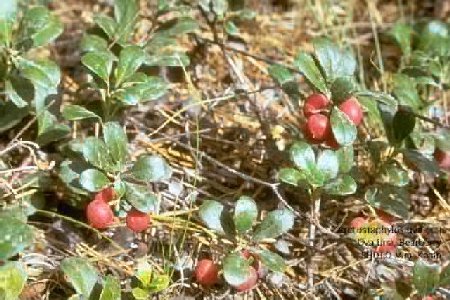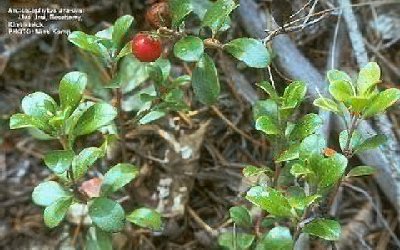Cat’s Claw
Uncaria tomentosa
Michelle Giesler and Kimberly Jones

I. General description
A. Where grown
-
Genus Uncaria found throughout the tropics
-
Uncaria tomentosa and Uncaria guianensis, the two species of current interest,
are found in South America
B. Plant characteristics
-
Called Lianas, meaning high climbing, twining woody vines
-
Grows up and around trees
-
Take 20 years to mature
-
There are two small, sharp thorns at the base of each pair of leaves, the
origin of its common name due to the resemblance to the claws on the paw
of a cat; these help the vine cling to trees, allowing it to grow up to 100
feet high
C. Parts harvested for medicinal effects
II. History
-
Cat’s claw first gained recognition after the amazing recovery of a
cancer patient treated with the herb in Austria (early 1970’s)
-
Klaus Keplinger was the Austrian who treated the patient
-
Word spread to Germany and Italy, where research on the herb soon began
-
Keplinger filed the first patent in the U.S. on Uncaria tomentosa in 1989
when the plant’s alkaloids were isolated and tested
III. Folk use
-
Used by Native Indians for hundreds of years
-
The Ashanica Indians believe that it has “life-giving” properties;
drink 1 cup of bark decoction each week to ward off disease, treat bone pains
and cleanse the kidneys
-
Known for a variety of uses, some of which include:
-
Wound healer
-
Anti-inflammatory
-
Antirheumatic
-
Intestinal disorders
-
Contraceptive
-
Tumors
IV. Chemical composition
Uncaria guianensis
Uncaria tomentosa
-
Six quinovic acid glycosides
-
Six oxindole alkaloids
-
Three polyhydroxylated triterpenes
V. Clinical Applications
Alkaloids of Uncaria tomentosa
1. Rhynchophylline
-
Antihypertensive
-
Dilates peripheral blood vessels
-
Relaxes blood vessels of endometrial cells
-
Inhibits sympathetic nervous system activities
-
Lowers blood cholesterol
-
Lowers heart rate
2. Mytraphylline
3. Hirsutine
-
Inhibits urinary bladder contractions
-
Local anesthetic properties
-
Curare-like action on neuromuscular transmission at higher doses
4. Isorhynchophylline
5. Most alkaloids have immunostimulant and phagocytosis enhancement
properties in-vitro, excluding rhynchophylline and mitraphylline
Quinovic acid glycosides of Uncaria tomentosa
-
The National Cancer Institute has verified some anticancer properties
-
European reports on its clinical use with AZT in the treatment of AIDS, due
to antiviral activity
-
Anti-inflammatory activity
-
Protective antimutagenic properties
VI. Contraindications
-
Pregnancy / lactation
-
Skin graft and organ transplant patients
-
Hemophiliacs prescribed fresh frozen plasma
-
Administration with vaccines
-
Administration with hormone therapies
-
Administration with thymus extracts
-
Administration with insulin
-
Use in children less than 3 years old
VII. Toxicity
-
Low toxicity is indicated by clinical trials
-
More studies need to be done
VIII. Dosage
A. Standardized capsules
-
300 mg (equivalent to 3,000 mg)
-
Contain no less than 3% total alkaloids (6 mg)
-
1-2 capsules TID
B. Concentrated tablets
-
1000 mg
-
Timed to release over a 2-4 hour period
-
1 tablet QD
C. Liquid concentrates
-
Available in 1 ounce bottles
-
8:1, 20% alcohol
-
Superior potency and bioavailability
-
Add 10-15 drops to warm water
-
Drink 1-3 times daily
D. Bark for tea
-
Available in 6 ounce bottles or 1/4 and 1 pound bags
-
Boil 1/3 ounce in 1 quart water for 30 minutes
-
Drink several times a day
E. Recommend taking doses on an empty stomach and allowing 2-3 months
of treatment to see an effect
IX. Clinical trials
A. Plant Metabolites. Structure and In-Vitro Antiviral Activity
of Quinovic Acid Glycosides from Uncaria Tomentosa and Guettarda
Platypoda [Journal of Natural Products 52 (1989)]
1. Used six glycosides from Uncaria tomentosa and three related glycosides
from Guettarda platypoda
2. Tested each glycoside for activity against RNA viruses
-
Minus-strand RNA virus (vesicular stomatitis virus, VSV)
-
Plus-strand RNA virus (rhinovirus type 1B, HRV 1B)
3. All glycosides exhibited an inhibitory effect against VSV
-
The glycoside concentrations were high with respect to their toxic doses
-
The presence of a free C-27 carboxyl group and the nature of the sugar moiety
affected the amount of antiviral activity
4. #6 glycoside from Uncaria tomentosa was the only one active against HRV
1B
-
It reduced cytopathic effect by 50% at only 1/2 the maximum nontoxic
concentration
-
Its structure includes a free C-27 carboxyl group and two glucose units
B. Mutagenic and Antimutagenic Activities of Uncaria Tomentosa
and its Extracts [Journal of Ethnopharmacology 38 (1993)]
1. Tested the effects of five extracts from Uncaria tomentosa for antimutagenic
activity
-
First tested the extracts for cytotoxicity against salmonella mutant strains
used in the following tests, to make sure results were reliable; no cytotoxicity
was noted
-
In-vitro test to determine antimutagenic effect on salmonella mutant strains
exposed to UVA irradiation
-
In-vivo test to determine antimutagenic effect on salmonella mutant strains
exposed to cigarette smoke
2. All extracts demonstrated antimutagenic activity both in-vitro and in-
vivo
3. Antimutagenic effect may be due to an antioxidant effect
-
Quenching singlet oxygen and scavenging oxyradicals generated by UVA irradiation
-
Inhibiting oxidative/free radical mediators involved in the transformation
of procarcinogens to carcinogens.
References for Cat’s Claw
Aquino, R, et al. Plant Metabolites. Structure and In Vitro Antiviral Activity
of Quinovic Acid Glycosides from Uncaria Tomentosa and Guettarda Platypoda.
Journal of Natural Products. 52(4)679-685, 1989.
Uncaria tomentosa. Botanical Safety Handbook. p119.
“Cat’s Claw.” The Lawrence Review of Natural Products,
Facts and Comparisons. April 1996.
Harada, M, et al. Effect of Indole Alkaloids from Gardneria Genus and Uncaria
Genus on Neuromuscular Transmission in the Rat Limb in Situ. Chemical
Pharmacy Bulletin. 24(2)211-214, 1976.
Harada, M, et al. Effect of Indole Alkaloids from Gardneria nutans Sieb.
et Zucc. and Uncaria rhynchophylla Miq. on a Guinea Pig Urinary Bladder
Preparation in Situ. Chemical Pharmacy Bulletin. 27(5)1069-1074, 1979.
Riggins, C. Herb Review - Cat’s Claw. Natural Pharmacy Newsletter.
p6-8.
Rizzi, R, et al. Mutagenic and Antimutagenic Activities of Uncaria Tomentosa
and its Extracts. Journal of Ethnopharmacology. (38)63-77, 1993.
Web sites:
http://www.bga.com/directsource/cctext1.html
http://www.bga.com/directsource/cctext2.html
http://www.cats-claw.com/price.htm
http://www.phoenix.net/~horizons/claw.html
http://www2.catsclaw.com/cats/



